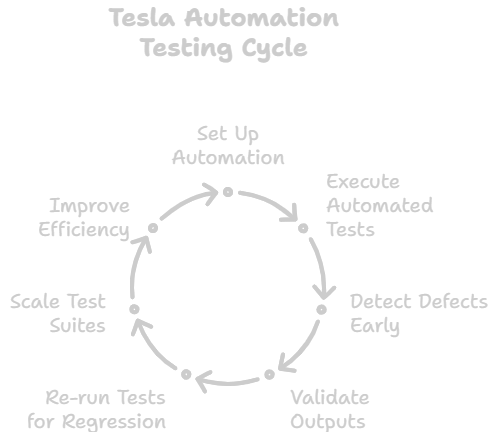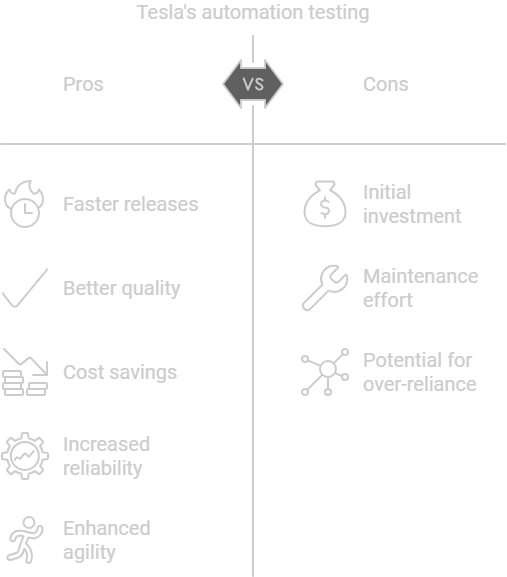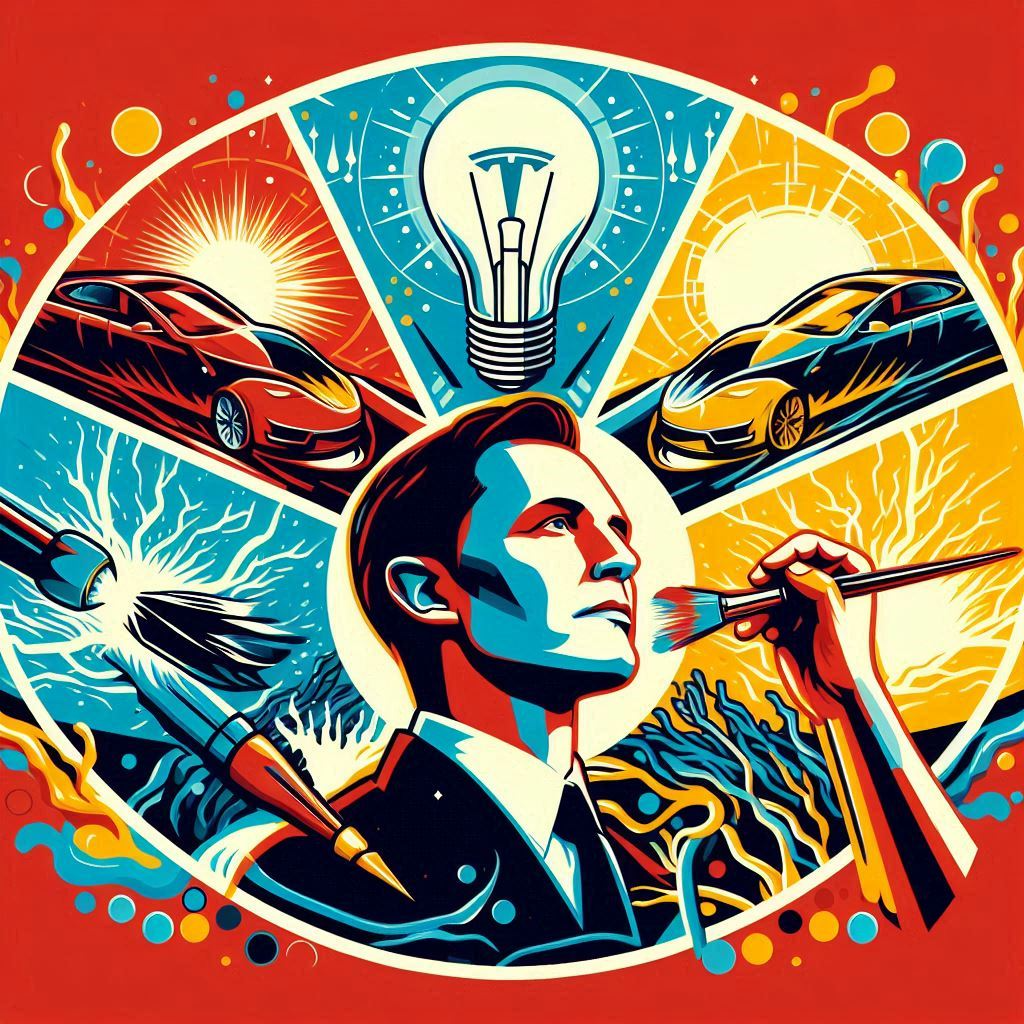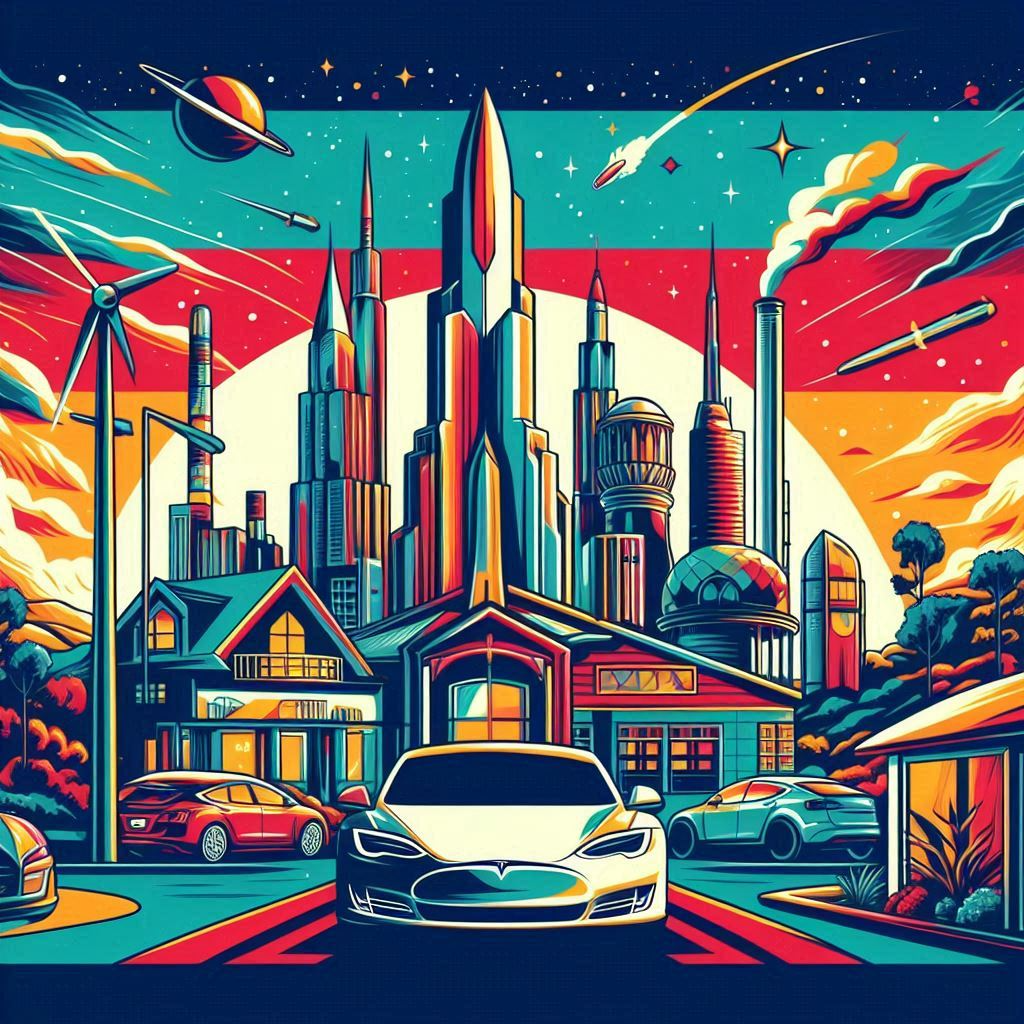The Role of Automation Testing in Tesla’s Innovation and Business Growth
Since its founding in 2003, Tesla has been at the forefront of innovation in the electric vehicle market. The company aims to accelerate the world’s transition to sustainable energy through increasingly affordable electric cars.
Under the leadership of CEO Elon Musk, Tesla has grown from a niche automaker to a mass-market brand, revolutionizing the perception of electric vehicles. Key innovations include extended-range batteries, cutting-edge powertrain technologies, and advanced driver assistance features.
Tesla’s vehicles boast industry-leading performance and range capabilities. The Model S sedan can travel over 400 miles on a single charge, while the Model 3 sedan costs around $35,000. Tesla is also ramping up the production of the Model Y crossover SUV and the Cybertruck pickup truck.
Beyond vehicles, Tesla aims to provide an integrated, sustainable energy ecosystem. This includes solar panels, energy storage, and charging infrastructure to support the transition to renewable energy.
Software innovation is critical as Tesla scales production and releases new models. Let’s explore how Tesla leverages automation testing to enable rapid software development and deployment to support the company’s ambitious growth.
Tesla’s Software Focus
Software is fundamental to Tesla’s vehicles, services, and overall business model. Unlike most automakers that rely on third-party suppliers for components like infotainment systems, Tesla develops its software in-house, viewing it as a core competency and competitive advantage.
The software in Tesla cars powers everything from the touchscreen interface to battery management to self-driving capabilities. The software also enables over-the-air updates to add new features, fix bugs, and improve performance without requiring a trip to the service center. Tesla’s Supercharger network and mobile app are also managed through sophisticated software.
By controlling the end-to-end software stack in its vehicles, Tesla can innovate rapidly and respond to customer needs in a way that traditional automakers cannot. Tesla continues aggressively recruiting software engineers as it pushes the boundaries of automation and autonomous driving. The company’s focus on software is critical in its strategy to accelerate the transition to sustainable transport.
The Role of Testing
Software testing is critical in ensuring the quality and reliability of Tesla’s products. Tesla vehicles are essentially computers on wheels, and the underlying software controls virtually every aspect of the car. Software defects or bugs can potentially lead to loss of function or even safety issues.
Thorough testing is essential to validate that the software operates as intended under actual world conditions. Testing helps identify problems early in the development cycle, which is far more efficient than finding issues after the code is deployed. Fixing bugs late in the process delays releases and is exponentially more expensive.
Given the complexity of Tesla’s software, which has millions of lines of code, more than manual testing is needed. Automation testing services provide the scale and efficiency required to test Tesla’s code base thoroughly. By scripting tests that run autonomously 24/7, automation allows far more tests to be executed in parallel. This testing rigor is necessary to ensure high quality and safety.
Tesla Automation Testing Overview

Automation testing is using software tools to execute repeatable tests against a system. Instead of relying on manual human effort, automated tests run scripts to simulate user inputs and validate that the system produces the expected outputs.
The key benefits of test automation include:
- Faster test execution – Automated tests run significantly faster than manual tests. This increases testing velocity and allows more tests to be run in a shorter period.
- Improved test coverage—Automation makes it practical to run huge test suites with more permutations of test data, leading to broader test coverage.
- Consistency—Automated tests perform precisely the same operations each time they are run, eliminating the inconsistencies inherent in manual testing.
- Early defect detection – Problems can be identified earlier in the development cycle when they are cheaper to fix.
- Regression testing – Automated tests make it easy to re-run test cases after changes to catch regressions where something previously working is broken.
- Scalability – Test suites can scale to huge test loads without requiring more human testers.
- Improved efficiency – Automated testing requires less human effort over the long run, although initial setup involves investment.
Overall, test automation complements manual testing to improve quality and confidence in the software being developed and deployed. It is a key practice for delivering high-quality software quickly.
Tesla’s Use of Automation
Tesla relies heavily on test automation across its software development lifecycle. As an innovative company at the forefront of software-defined vehicles, Tesla recognizes the importance of automated testing to enable rapid iteration and deployment of high-quality software.
Reports indicate that Tesla aims to automate 100% of its tests. While complete test automation may not be achievable, Tesla has automated most of its testing, including unit testing, integration testing, system testing, and regression testing.
Test automation is ingrained in Tesla’s engineering culture and CI/CD pipelines. Engineers write and execute unit tests using automation frameworks like Python’s unittest and Pytest. Higher-level system and integration tests are automated using tools like Robot Framework.
Tesla also leverages test automation techniques like fuzz testing and canary testing that are essential for software reliability in safety-critical vehicle systems. The extensive use of test automation allows Tesla to test new features and rapidly catch bugs early.
Overall, Tesla’s heavy focus on automated testing enables the company to frequently push new software updates securely to customer vehicles. This level of automation testing is unmatched in the automotive industry and underpins Tesla’s technical edge.
Benefits for Tesla

Tesla’s heavy investment in automation testing has provided significant benefits that aid the company’s rapid innovation cycles and business growth.
- Faster release velocity: With automation, Tesla can test software much faster than manual testing would allow. This enables them to release updates, add new features, and fix bugs faster than traditional automakers. The increased release velocity supports Tesla’s ability to roll out innovative capabilities continuously.
- Improved software quality: Automation enables extensive manual testing that would be infeasible. This allows Tesla to achieve greater test coverage and find more defects before releasing software. The resulting quality improvements increase customer satisfaction.
- Cost savings: Automation significantly reduces the human effort required for repetitive testing tasks. This allows Tesla to scale testing cost-effectively even as the code and complexity grow. The cost savings can be reinvested into further innovation.
- Reliability: Automation makes rerunning the same tests on every software change economical. This helps prevent regressions and provides stability, essential as Tesla rapidly iterates. Improving reliability is key to growing consumer confidence.
- Agility: With automated tests, Tesla developers can make changes to code rapidly without worrying about breaking existing functionality. This test safety net enables more agile development and faster adaptation to new opportunities.
Test automation has been a vital enabler of Tesla’s ability to innovate and scale quickly while still delivering high-quality software products to customers. The automation-first approach has been key to disrupting the automotive industry.
Challenges and Limitations

Automation testing has enabled Tesla to achieve high-velocity software development and rapid iteration. However, implementing automation at scale also comes with difficulties and limitations:
- Maintenance costs – Automation tests need to be maintained and updated as the software changes. The initial investment required to build automation frameworks is high.
- Flakiness—Due to environmental issues, Automated tests can sometimes fail randomly or “flake.” This leads to false test failures that reduce trust in the automation. Tesla engineers have to improve test stability continually.
- Coverage challenges—Certain types of testing, such as exploratory, usability, and security, are still best done manually. Automation has limitations in covering every software testing need.
- Skill requirements – Automation requires software engineers with specialized skills in coding, scripting, and using automation tools. Recruiting and training automation talent is an ongoing need.
- Integration with legacy systems – Some of Tesla’s older backend systems can be difficult to integrate with new automated UI tests. Adaptors and abstraction layers are needed.
While extremely beneficial overall, automation does not eliminate the need for manual software testing at Tesla. The company still employs manual testers and complements automation with exploratory, usability, and other forms of manual testing.
Best Practices at Tesla

Tesla has built a strong automation testing culture and adopted key best practices, enabling it to scale its automated testing effectively. Here are some of the keys to Tesla’s successful automation testing practices:
Comprehensive Test Framework and Architecture—Tesla uses a well-designed, modular test framework that enables easy test maintenance and extension and allows new tests to be quickly added. The framework provides capabilities like easy test configuration, logging, reporting, and integration with CI/CD pipelines.
Layered Testing Strategy – Tesla combines unit, integration, system, and end-to-end UI testing. Lower-level fast tests provide a safety net, while higher-level end-to-end tests cover critical user journeys. This provides comprehensive coverage while optimizing speed.
Focus on Test Reliability—Flaky, unreliable tests can slow down development velocity. Tesla strongly emphasizes test stability, using well-designed page objects, proper waits and syncs, and automated test reruns to ensure consistent, trustworthy test executions.
Automated Test Generation—Tesla uses AI and machine learning to auto-generate test cases for areas like UI testing rather than relying entirely on manual scripting. This significantly improves test coverage.
Continuous Execution—Tests are executed on every code change and integrated into the CI/CD pipelines. Issues are caught early before propagating downstream, and tests are run in parallel to optimize speed.
Actionable Metrics and Analytics – Rich analytics provide insights into test effectiveness, coverage, flaky tests, and pass/fail rates. Engineers use this data to optimize and improve test suites.
Future Outlook

As Tesla continues to innovate and push the boundaries of electric vehicle technology, increased use of automation testing will likely play a key role. Automation provides several benefits that can aid future innovation efforts:
- Faster testing cycles. As Tesla introduces new features and capabilities, automation will allow them to test these rapidly during development. This enables quicker feedback loops and more iterations.
- Scalability. Automation testing is easier to scale as the codebase grows larger. This will allow Tesla to test complex new features involving multiple systems efficiently.
- Reliability. Automated tests provide consistent and reliable regression testing to ensure new code changes do not break existing functionality. This gives developers more confidence when modifying code.
- Accessibility. Automated tests can run continuously overnight or when developers are not actively testing, providing constant feedback.
- Efficiency. Automated testing frees developers and testers to focus on more complex test cases, requiring less repetitive manual testing.
By leveraging increased automation, Tesla can accelerate innovation cycles. New features and capabilities can be developed, tested, and released faster. Automation provides the scale, speed, and reliability needed as Tesla’s products grow more complex. This will aid future efforts to stay ahead in electric vehicle technology.
Conclusion
Tesla’s heavy focus on software and automation sets it apart from other automakers. Tesla can rapidly develop and deploy new features and functionality using automation testing. This allows Tesla to improve its vehicles continuously via over-the-air software updates. Automation testing is essential for Tesla’s iterative, agile approach to software development.
The extensive use of automation enables Tesla to thoroughly test new code and features without an exponential increase in time and effort. Automation provides confidence that updates will work reliably. This is critical, as any major software failure could damage Tesla’s brand and customer trust.
Overall, automation testing supports Tesla’s ambitious vision for the future of driving. It allows faster delivery of innovations like autopilot while maintaining safety and reliability. As Tesla continues pursuing full self-driving capabilities, robust automation testing will remain a competitive advantage. Tesla’s focus on software and automation is reshaping the automotive industry.

Vizologi is a revolutionary AI-generated business strategy tool that offers its users access to advanced features to create and refine start-up ideas quickly.
It generates limitless business ideas, gains insights on markets and competitors, and automates business plan creation.


